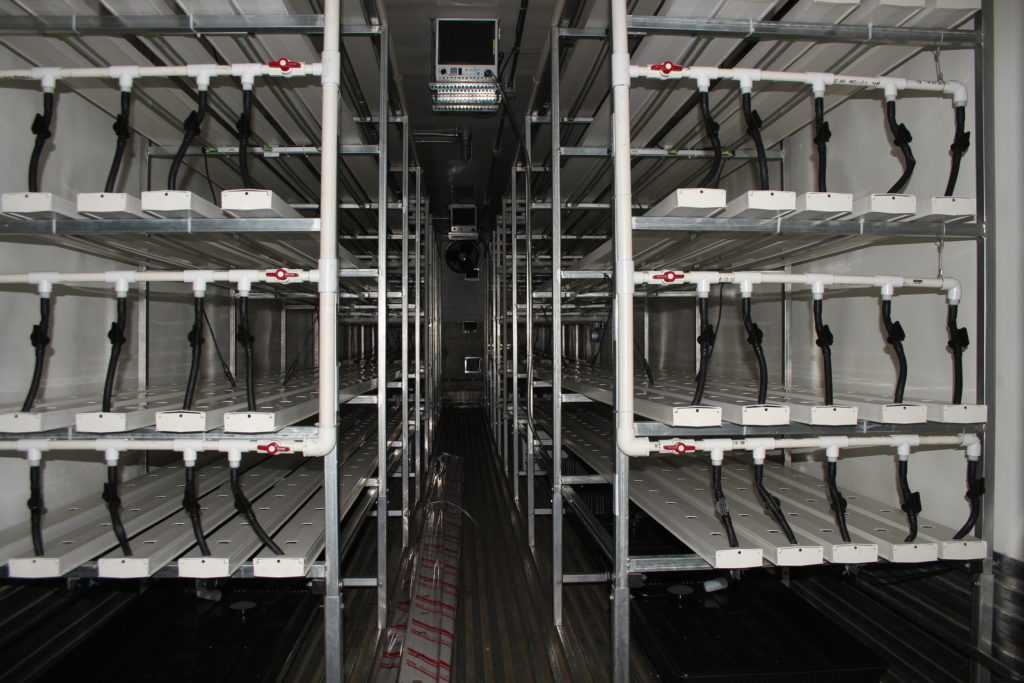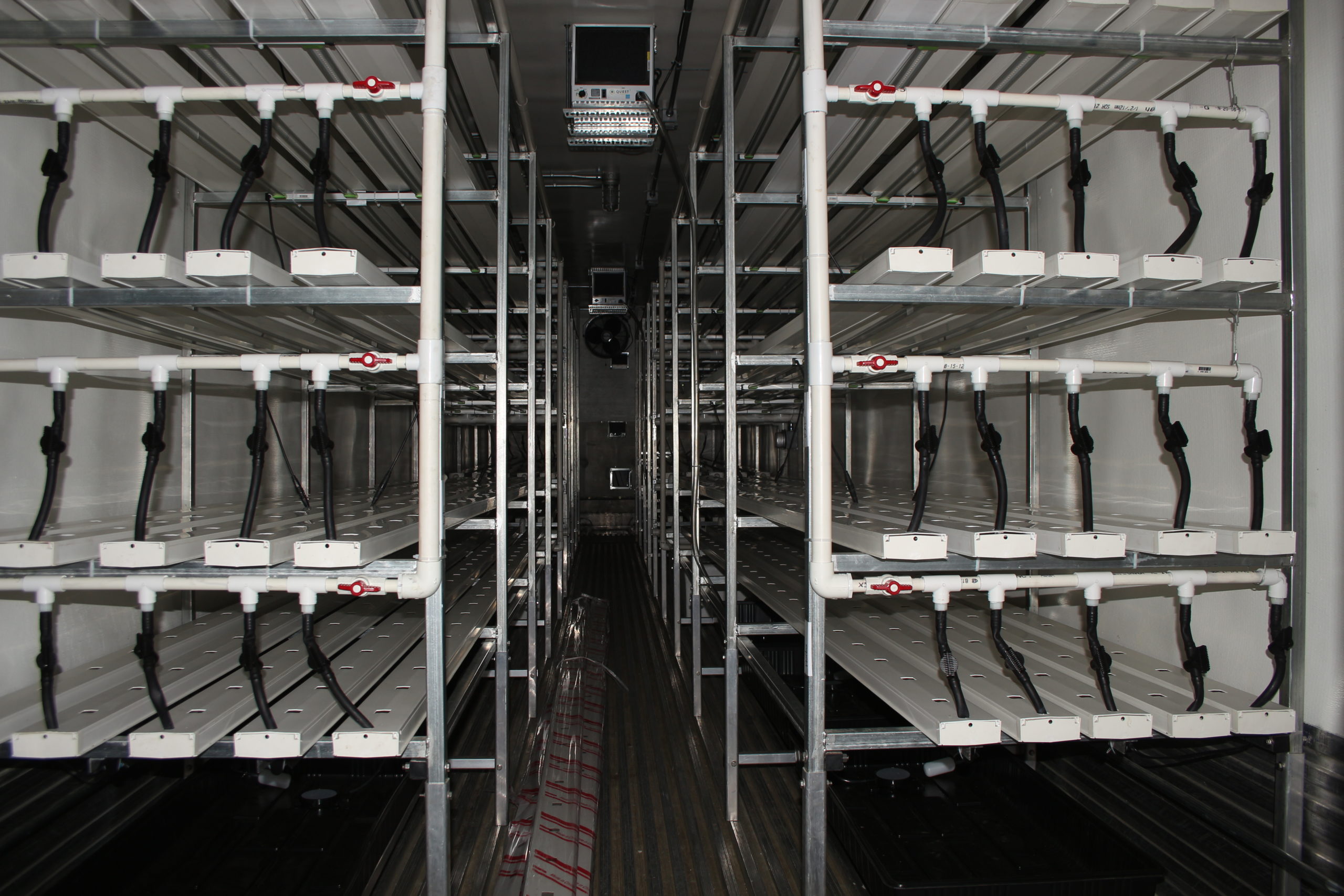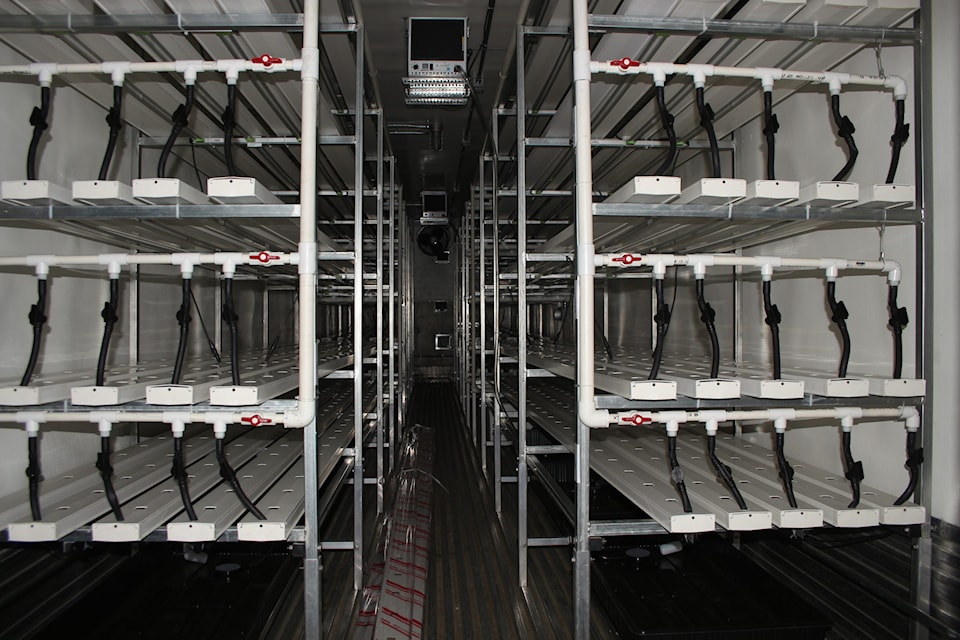Lovers of leafy greens will soon have another option for fibre as Inuvik Community Greenhouse has acquired a long-awaited heated hydroponics container.
Years in development and sporting the artwork of greenhouse employee Adi Scott, the re-purposed trailer is visible on the way into town. Community Garden Society of Inuvik executive director Ray Solotki said the facility, developed by ColdAcre Food Systems would be up and running within two weeks.
"We're going to grow herbs, lettuces..." she said. "We'll do pak choi, we'll do kale and swiss chard. You'll get enough variety, but you're still getting about a pound of greens for $20."

Eric Bowling/NNSL photo
Scott, who painted the water colour during a fall trip through the Delta and combined it with photographs from the trip said she was grateful to have her work as part of Inuvik's landscape.
"I think it was mostly a case of right time, right place," said Scott. "It was a piece of artwork that I had already made-up for fun. All I had to do was edit it to be the right size for the unit, which was very serendipitous."
Solotki said the new hydroponics unit will be able to produce between 500 to 1,000 pounds of greens a month. Crops will be available through Northmart. They also will be part of greenhouses' annual 'veggie box' program, now available all year long. Boxes will cost $20 a week and are available to members.
Growing jobs alongside crops
If the program takes off as hoped, the system is expandable, both horizontally and vertically.
Part of the project involves setting up an office next to the hydroponics unit. Eventually, food will be for sale out of that as well. Solotki said the Arts, Crafts, and Technology Micro-manufacturing Centre could even provide locally-sourced packaging.
As an added bonus, the entire unit runs on solar power. Planning is underway to construct a nearby solar farm to power the facility.
Maintaining the hydroponics unit will take about 20 hours of work a week. Aside from keeping the water system topped up, keeping an eye on the progress of crops and ensuring the water is at the right pH balance, one task is of extreme importance over the summer: keeping insects out.
Making that easier is an outer staging unit separate from the plants inside to help keep the pestering bugs out.
Solotki noted she had someone in mind already to maintain the new unit. But she said the organization is eager to train more members of the community in the craft.
Last year, the greenhouse opted to run as an indoor farm, with dramatic success. Solotki added this year the greenhouse has its entire staff returning, which expands the capacity of the organization.
Another idea taking root is bringing youth in for part-time work. Solotki said Inuvik Community Greenhouse could become a steady source of work for kids in town. Already one eager young green-thumb was helping out with cleaning and she said there was room for more.
Hydroponics laying groundwork for aeroponics
Backed by grant funding from a wide variety of sources, Solotki said the project also was working with academics to expand to other communities.
"We're working with the University of Saskatchewan to actually train people on how to use these facilities in the hopes that we'll actually see small units in all of the communities in the north, if we can make them viable," she said, adding she had more proposals in the works.
This is only the latest step. Next, Solotki said she wanted to pursue an aeroponics facility.
"Hydroponics focus on greens. Aeroponics can work on beans, peas, potatoes — you can grow a lot of things," she said. "We want to expand on this containerized unit idea.
"This is a very old trailer. It's an extremely old thing that probably would have ended up in a landfill somewhere that we're now turning into a greenhouse. We would love to see these kinds of units being used in a better capacity."
As funding available for agriculture in the North is very limited, Solotki said the greenhouse society was trying to become more self sufficient to free up grant money for other communities.
"If I'm constantly tapping into it, other people can't," she said. "If I'm able to say 'No, actually we don't need X amount of money because we're making it ourselves,' somebody else can say 'I want to start a greenhouse.' We wouldn't be fighting for that same pot of money, which is counterproductive."
For her part, Scott said she hoped drivers enjoyed seeing her work on the highway.
"A really big thanks to all the Greenhouse staff, board members and the community for being just who they are, and making it possible for me to be in the North!" she said.

